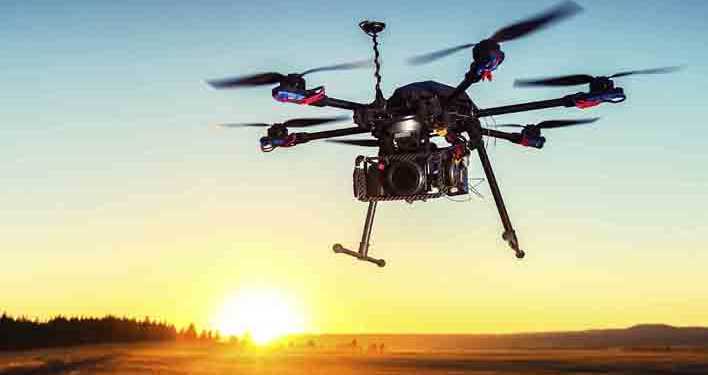After years of an unregulated environment, the government has finally come up with policy document for drone industry. The civil aviation regulator, Directorate General of Civil Aviation (DGCA) has announced a new licensing regime for the operation of drones. The new policy will be implemented from December 1, 2018, and it defines how drones (officially named as remotely piloted aircraft) can be flown and the restrictions under which they will operate. The policy document divides drones into five categories- nano, micro, small, medium and large.
A nano drone is defined as those less than 250 grams and operates below 50 feet and micros are those between 250 grams and 2 kg and operate below 200 feet. These two categories do not need any registration, the rest will have to do registration and require a license to operate. As per civil aviation ministry “the drones with an operator’s license need to have features such as a global positioning system, return-to-home facility, anti-collision capability, flight controller with flight data logging capacity, a SIM to ensure that drones do not take off without permission and an identification plate.” The operation of drones is restricted to below 400 feet and could be operated only in daylight. Another restriction is that the drones could not operate out of eyesight range. The drones could not be used near border areas like Line of Control (LoC), Line of Actual Control (LAC) and Actual Ground Position Line (AGPL). Drones will also not be allowed near military installations and eco-sensitive zones without prior permission.
The commercial operations of drones will be in power, mining, real estate, oil and gas exploration, highways construction and supervision, railways construction and supervision. The drones allow quick aerial surveys, mine blasts, and subsequent operations. Relief operations could also be carried out through drones during the time of calamities. They could also be used in civilian and state policing, so the regulators will have to make sure that they should be used with legal premises. The policy also provides a framework to develop domestic manufacturing of drones. As per Ernest & Young, the projected market size of drone industry by 2021 is 885 billion dollars. Civil aviation minister Suresh Prabhu said: “I am sure many new and exciting applications will emerge that will propel India’s economy forward. Our progressive regulations will encourage a vast Made in India drone industry.”
As per the current framework the e-commerce companies could not use drones for delivery of goods. A committee led by Minister of State for Civil Aviation, Jayant Sinha will explore the possibilities of use of the drone for delivery of goods in second generation licensing policy for operating drones. E-commerce and home food delivery companies were eagerly waiting for drone policy because it was commercially most useful to them if the government has allowed drone delivery. But as of now the only positive sign they have got is that a committee is looking into it. Many countries like China, Australia, New Zealand, Japan, UK, Ireland, and Canada allow commercial use of drone but India did not have an official policy on it. In India, drones have been used primarily for wedding photo shoots and by hobbyists for different tasks. Large-scale commercial use of drones is yet to be explored.































